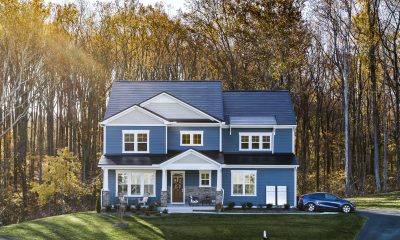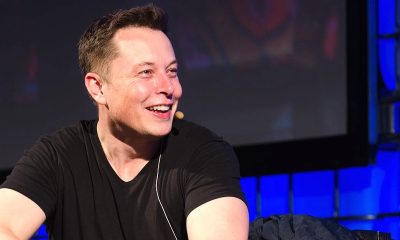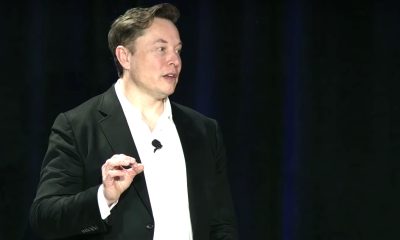News
SolarCity poised for rapid growth as residential solar installations soar
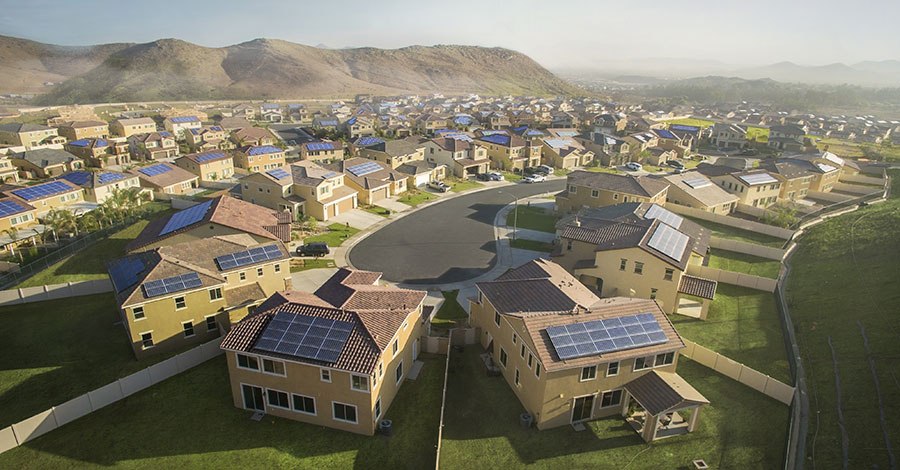
The recent merger of Tesla and SolarCity introduces a new era in residential solar energy generation. With the demand for solar energy in the U.S. rising each year, benefits to both our environment and the nation’s economy increase. The trend toward residential solar installations does require efficient planning and execution of public policies. It also calls for analysis of the status of residential solar in order to move toward an enhanced solar integration across the U.S.
What does residential solar look like today in the U.S.?
Residential solar today is primarily a coastal phenomenon, although more than half of the states have enough residential solar to power at least a few thousand homes. Yet, in the third quarter of 2016, the U.S. surpassed all previous quarterly solar photovoltaic (PV) installation records: 4,143 megawatts (MW), or a rate of one megawatt (MW) every 32 minutes. That pace is even faster today, as the fourth quarter will surpass this past quarter’s historic total, according to the Solar Energies Industry Association (SEIA).
“The solar market now enjoys an economically-winning hand that pays off both financially and environmentally, and American taxpayers have noticed,” Tom Kimbis, SEIA’s interim president, said of the recent rise in residential solar. “With a 90 percent favorability rating and 209,000 plus jobs, the U.S. solar industry has proven that when you combine smart policies with smart 21st century technology, consumers and businesses both benefit.”
Here are the top five U.S. states with residential solar rooftops in September, 2016:
- California: 3,258 MW
- Arizona: 539 MW
- New York: 444 MW
- New Jersey: 386 MW
- Massachusetts: 361 MW
These levels are considered ample to power a significant number of homes in their regions.
What’s the potential for other states to increase residential solar in the near future?
In order to power more than a few thousand homes and to become a major energy source across America, solar saturation must become deeper across existing states and more widespread among states that currently provide limited residential solar. Rooftops provide a large expanse of untapped area for solar energy generation, according to the National Renewable Energy Laboratory (NREL). What’s needed to reduce costs and losses often associated with transmission and distribution of electricity? Onsite distributed generation, such as that which is available from SolarCity and others. Yet, to create a paradigm in which onsite distributed generation can become a reality, different and sometimes dissonant potentials must be addressed.
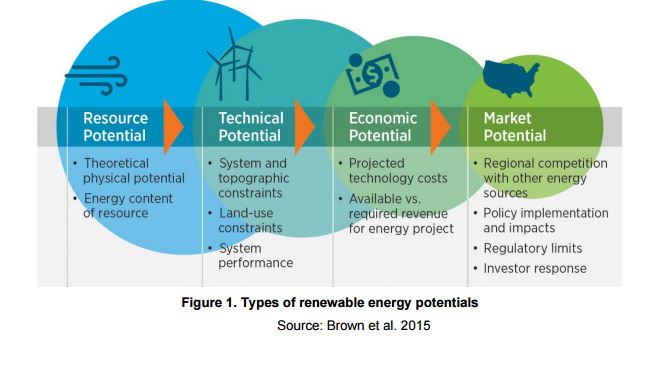 Technical potential considers multiple factors in a given region, such as resource availability and quality, technical system performance, and the physical availability of a suitable area for development. In other words, it measures how much of the total resource can actually be captured. It is often the only area of focus when residential solar is discussed.
Technical potential considers multiple factors in a given region, such as resource availability and quality, technical system performance, and the physical availability of a suitable area for development. In other words, it measures how much of the total resource can actually be captured. It is often the only area of focus when residential solar is discussed.
However, in order for solar to reduce pollution, help homeowners to lower utility bills and gain more energy independence, technical aspects of the larger solar equation must work in sync with resource, economic and market potential.
- Resource potential is the entire amount of energy in a particular form for the region;
- Economic potential is possible generation quantity that results as a positive return on the
investment of constructing the systems; and, - Market potential estimates the quantity of energy expected to be generated from the deployment of a technology into the market. It considers factors such as policies, competition with other technologies, and rate of adoption.
A study from the NREL indicates that, taking into account these four types of potential, there are broad regional trends in both the suitability and electric-generation possibilities of rooftops. Although only 26% of the total rooftop area on small buildings is suitable for PV deployment, the sheer number of buildings in this class gives small buildings the greatest technical potential.
What factors contribute to successful onsite distributed solar generation?
Small building rooftops could accommodate 731 GW of PV capacity and generate 926 TWh of PV energy annually, according to NREL, which represents approximately 65% of the total technical potential of rooftop PV. Think about how much energy could be generated by rooftop solar panels in each state if they were installed on all suitable roofs. Of course, the amount of suitable roof area, which takes into account factors such as shading, roof tilt, roof position, and roof size, must be included in any potential residential solar project planning.
The folks at SolarCity truly believe that, in every state, home rooftop solar could be a major energy resource. With research data backing their conclusions, they feel that U.S. total home solar capacity could increase 100 times over, and each state could meet 10-45% of its electricity needs from residential solar alone.
Add in roofs of medium and large buildings, and the solar integration number rises to 40 percent of all the electric demand in the continental U.S. By comparison, all rooftop solar today combined provides less than 0.5 percent of the nation’s electricity.
The potential for home rooftop solar to become a major energy source is enormous — in every state. And SolarCity argues that, the sooner that homes across the country become a part of that future, the more years they’ll have to enjoy its benefits.
Sources: Solar Energy Industries Association, National Renewable Energy Laboratory, SolarCity
Elon Musk
Tesla’s popular side business is going to get bigger, Elon Musk says
It took several years to get the Diner developed, built, and opened. On July 21, Tesla launched the Diner to the public at 4:20 p.m. local time (of course), after years of development. Musk first offered the idea of a drive-in Supercharger Diner back in December 2018.
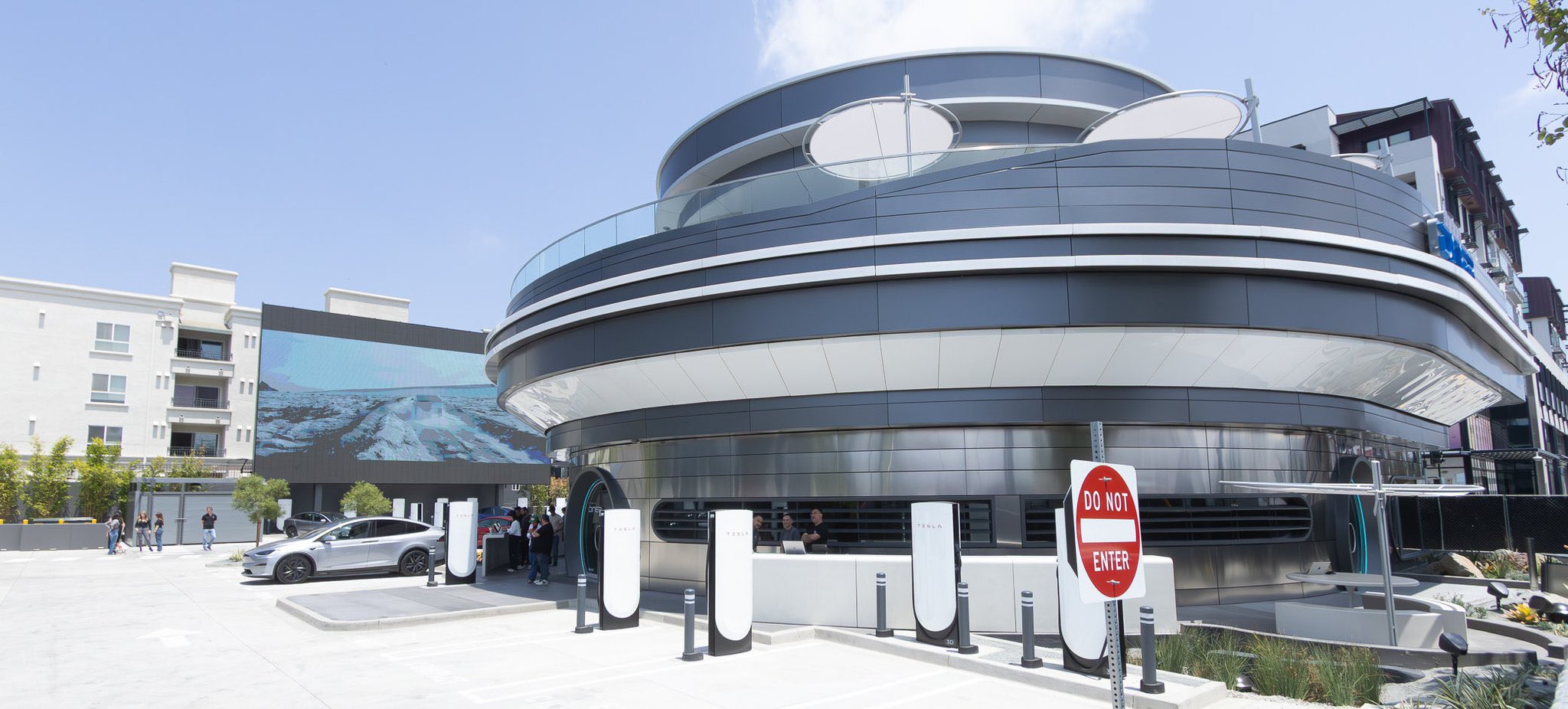
Tesla will open two new Diner locations in the United States after its first location in Los Angeles has been a raging success, as it is constantly packed and serving food for 24 hours a day, every day.
Tesla CEO Elon Musk said that the initial Diner location on Santa Monica Boulevard is “going well,” and based on reviews and its constant out-the-door lines, it is safe to say it has been a major outlet of interest for people in the area.
It features two massive movie screens, a menu that is locally sourced and has been created by a world-class chef, and Supercharging for EVs. It truly is the perfect stop for those who are hungry, need entertainment, or need a quick charge.
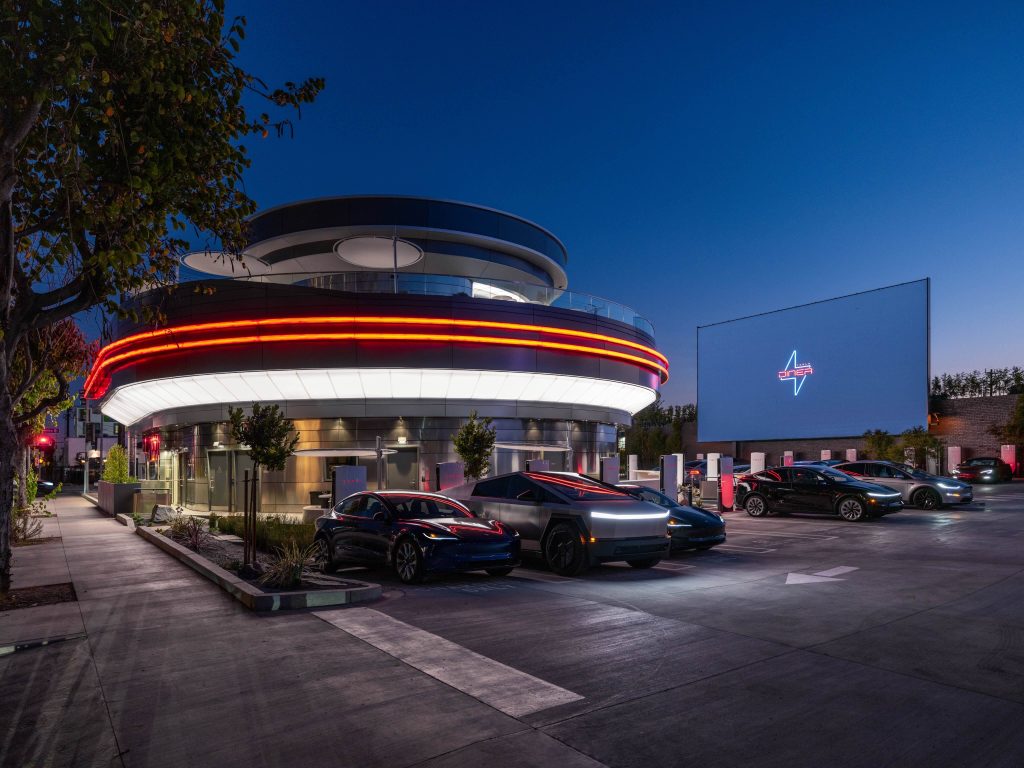
Credit: Tesla
So far, Tesla has not released too many details on the success of the restaurant, but it did state in a graphic for its Q3 Supercharging stats that it sold roughly 50,000 burgers at the Diner in Q3, roughly 715 each day. Burgers are not the only thing on the menu, either.
With how well it has gone, Musk is now considering the possibility of new locations that are notable to Tesla, including Austin and Palo Alto.
On Friday, Musk revealed he believes it “probably makes sense to open one” near Gigafactory Texas and Engineering HQ in Palo Alto:”
The futuristic Tesla Diner is going well. Probably makes sense to open one near our Giga Texas HQ in Austin and engineering HQ in Palo Alto. 😋 https://t.co/l0DUtR8CFg
— Elon Musk (@elonmusk) October 31, 2025
It took several years to get the Diner developed, built, and opened. On July 21, Tesla launched the Diner to the public at 4:20 p.m. local time (of course), after years of development. Musk first offered the idea of a drive-in Supercharger Diner back in December 2018.
By 2023, Tesla had secured building permits and broken ground on the site in September of that year.
Since its launch, it has been a popular hotspot for Tesla fans and others to visit, although it has attracted unwanted attention from protestors as well.
Cringey protestors are outside the Tesla Diner in Los Angeles singing “Elon Musk has got to go”
These people are absolutely nuts pic.twitter.com/LZ0U6rpMIn
— TESLARATI (@Teslarati) October 27, 2025
They look hungry. If they walked inside and ordered some food, maybe they’d stop yelling into microphones and threatening Musk.
Elon Musk
Elon Musk’s AI empire grows as xAI leases Palo Alto space near Tesla
The expanding footprint of Elon Musk’s companies in Palo Alto bodes well for the CEO’s plans in the area.
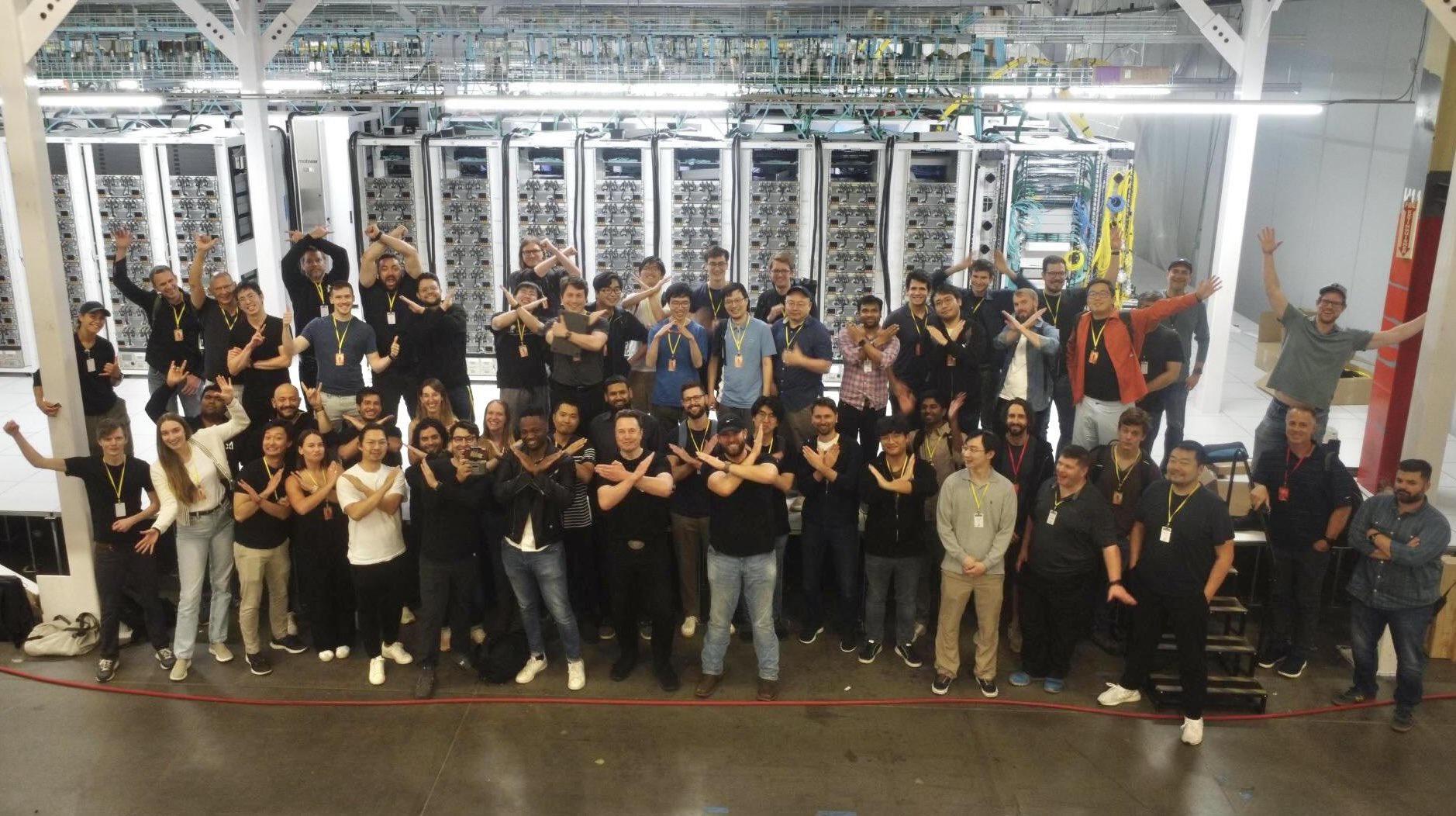
Elon Musk’s artificial intelligence startup, xAI, is expanding its Silicon Valley footprint, leasing roughly 105,000 square feet of office space at Palo Alto’s Page Mill Center, just blocks away from Tesla’s engineering complex.
Musk’s deepening Silicon Valley footprint
People familiar with the matter have informed the San Francisco Business Times that xAI’s lease at Page Mill Center may already have been finalized, adding to the company’s existing headquarters at 1450 Page Mill Road. The two offices share a parking lot, reflecting Musk’s strategy of consolidating his ventures. Tesla’s engineering hub is also just a few blocks away.
The new offices form a growing cluster of Musk-led companies in the heart of the Valley and come as xAI has listed over 250 job openings. These include listings for engineers, designers, and technical staff, among others.
xAI’s aggressive hiring push hints at rapid scaling, which makes quite a lot of sense considering the company’s ambitious projects. xAI oversees the large language model Grok and other AI initiatives such as the newly launched Grokipedia, and the startup has also acquired the social media platform X. Real estate owner Hudson Pacific Properties, the owners of Page Mill Center, have so far declined to comment.
AI demand and Silicon Valley’s office rebound
Silicon Valley’s office market, long subdued by remote work trends, is seeing renewed activity from AI firms. Hudson Pacific told investors this summer that tenant demand has reached a three-year high, with over half of new leases driven by artificial intelligence companies. Vacancy rates have now fallen for four straight quarters to 16.6% as well, CBRE reported.
The expanding footprint of Elon Musk’s companies in Palo Alto bodes well for the CEO’s plans in the area. Musk, after all, has previously butted heads with officials, resulting in his two biggest ventures, electric vehicle maker Tesla and private space company SpaceX, officially relocating their headquarters to Texas.
News
Starship lunar update shows SpaceX will not give up the Moon without a fight
SpaceX stated that the revised concept aims to “result in a faster return to the moon while simultaneously improving crew safety.”
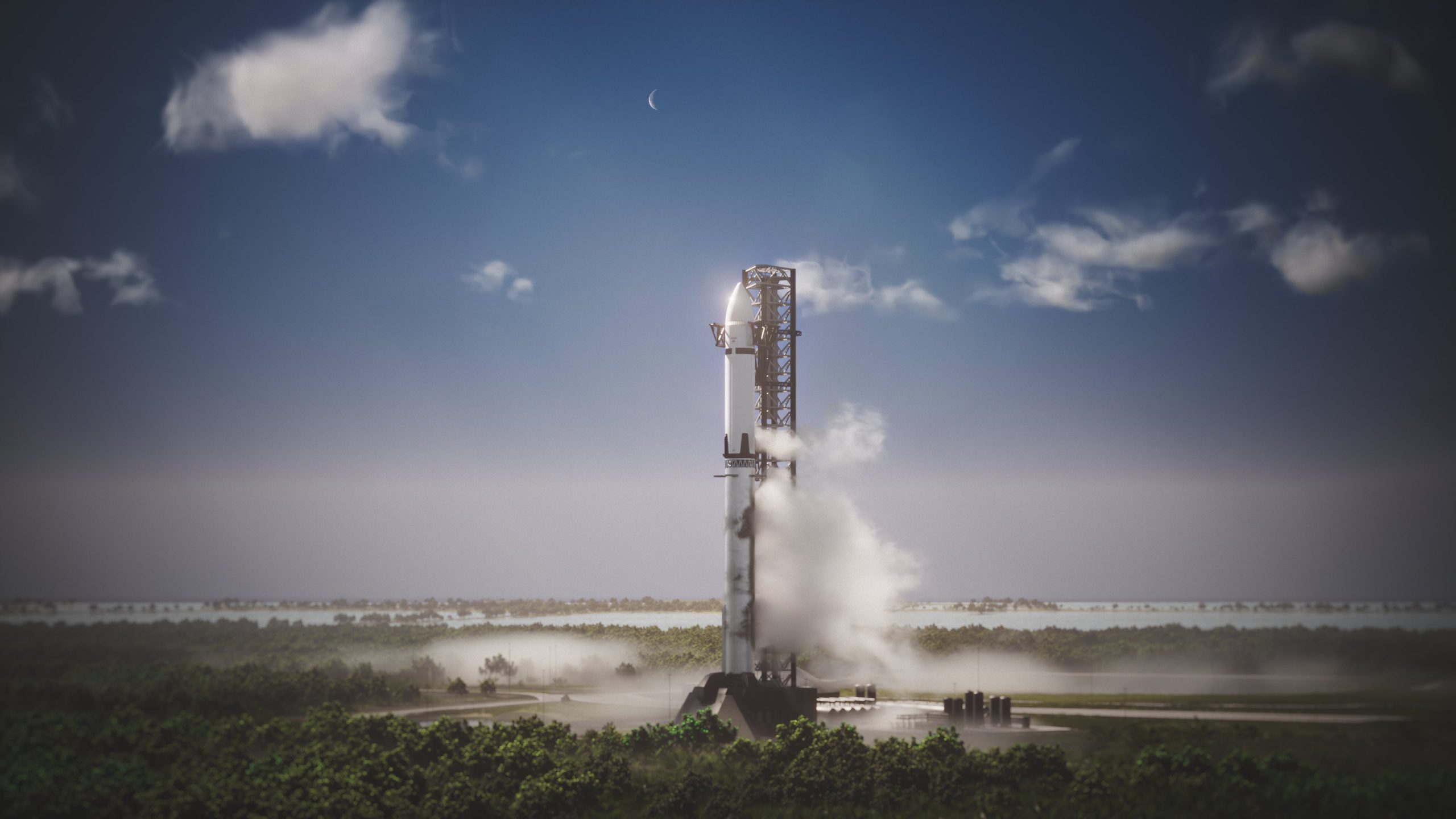
SpaceX is reassessing its Starship mission plan for NASA’s Artemis 3 program, exploring what it calls a “simplified” architecture that could accelerate the first crewed lunar landing of the 21st century.
The private space company stated that the revised concept aims to “result in a faster return to the moon while simultaneously improving crew safety,” following NASA’s decision to reopen the lunar mission contract to new competition.
SpaceX outlines HLS progress
In a blog post titled To the Moon and Beyond, SpaceX detailed recent Starship milestones and reaffirmed its role as a “core enabler” of NASA’s lunar ambitions. As per SpaceX, its efforts are not just aimed at returning to the Moon. It is aimed at establishing a permanent, sustainable presence on the lunar surface.
“Since the contract was awarded, we have been consistently responsive to NASA as requirements for Artemis III have changed and have shared ideas on how to simplify the mission to align with national priorities. In response to the latest calls, we’ve shared and are formally assessing a simplified mission architecture and concept of operations that we believe will result in a faster return to the Moon while simultaneously improving crew safety,” SpaceX wrote in its post.
The post described Starship’s vast potential for lunar operations, noting that a single vehicle provides over 600 cubic meters of pressurized habitable volume, roughly two-thirds that of pressurized volume of the entire International Space Station, and is “complete with a cabin that can be scaled for large numbers of explorers and dual airlocks for surface exploration.”
SpaceX also mentioned its fixed-price NASA contract, which ensures taxpayer protection while incentivizing milestone-based progress. As part of its preparations for a Moon mission, SpaceX plans to conduct a key in-space refueling demonstration in 2026, as noted in a Space.com report. Regerdless, SpaceX is still continuing the parallel development of its “core” Starship for Mars and deep-space exploration.
SpaceX’s update followed NASA concerns
NASA Acting Administrator Sean Duffy recently voiced frustration over Starship’s pace, noting on CNBC that SpaceX “pushed their timelines out” while the U.S. remains in a race against rivals. In a comment, Duffy stated that NASA will not wait for one company as it pushes forward with its Artemis program.
“I love SpaceX. It’s an amazing company. The problem is, they’re behind. They’ve pushed their timelines out, and we’re in a race against China. The president and I want to get to the Moon in this president’s term, so I’m going to open up the contracts. I’m going to let other space companies compete with SpaceX, like Blue Origin,” Duffy said.
Elon Musk publicly criticized Duffy over his remarks, but SpaceX’s latest update has shifted the focus back to technical progress and mission readiness. While SpaceX did not elaborate on the details of its simplified architecture, Musk hinted that Starship could eventually accomplish “the whole moon mission” on its own. “Starship will build Moonbase Alpha,” Musk wrote in a recent post on X.
-

 Elon Musk2 weeks ago
Elon Musk2 weeks agoSpaceX posts Starship booster feat that’s so nutty, it doesn’t even look real
-

 Elon Musk2 weeks ago
Elon Musk2 weeks agoTesla Full Self-Driving gets an offer to be insured for ‘almost free’
-

 News2 weeks ago
News2 weeks agoElon Musk confirms Tesla FSD V14.2 will see widespread rollout
-

 News2 weeks ago
News2 weeks agoTesla is adding an interesting feature to its centerscreen in a coming update
-

 Elon Musk2 weeks ago
Elon Musk2 weeks agoTesla CEO Elon Musk’s $1 trillion pay package hits first adversity from proxy firm
-

 News2 weeks ago
News2 weeks agoTesla might be doing away with a long-included feature with its vehicles
-
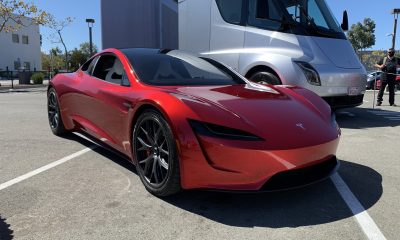
 News2 weeks ago
News2 weeks agoTesla updates fans on its plans for the Roadster
-
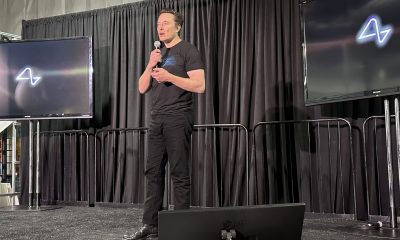
 Elon Musk2 weeks ago
Elon Musk2 weeks agoAfter moving Tesla to Texas, Elon Musk is back in the Bay Area with Neuralink expansion


